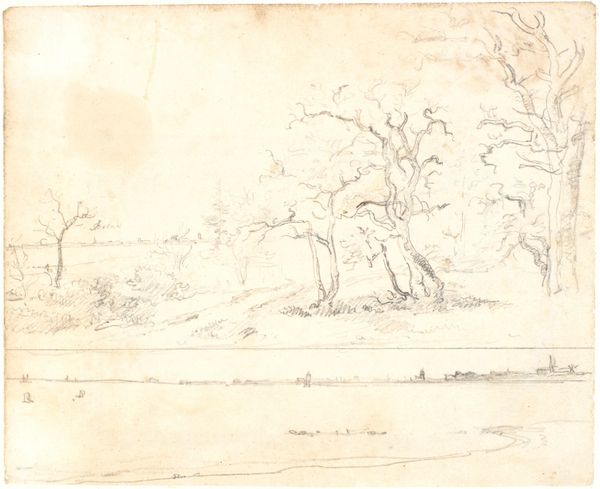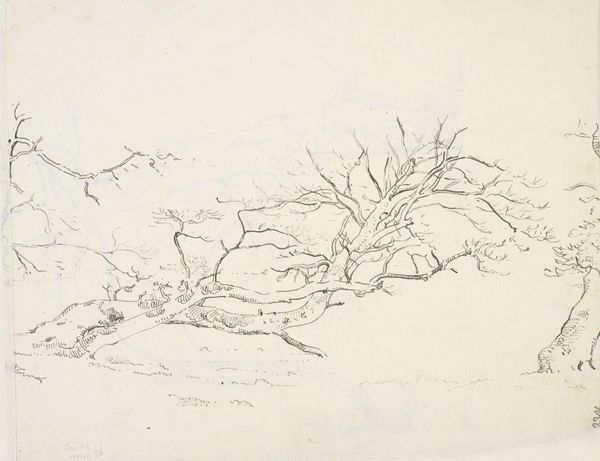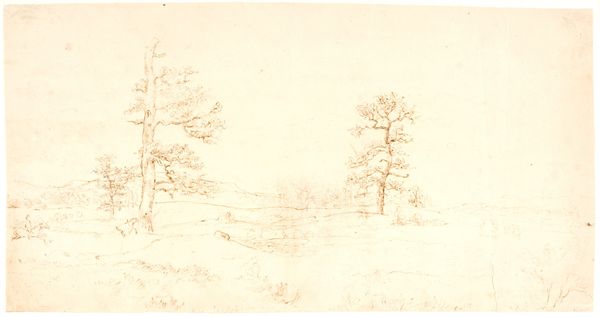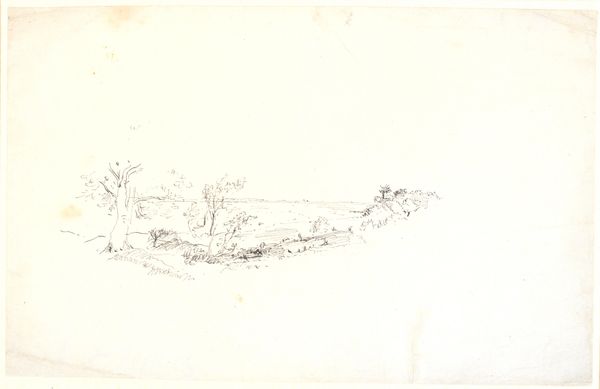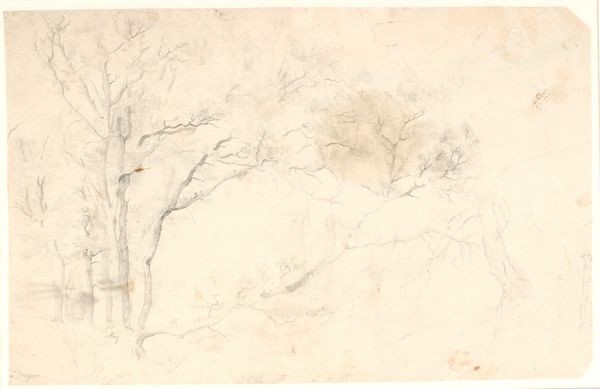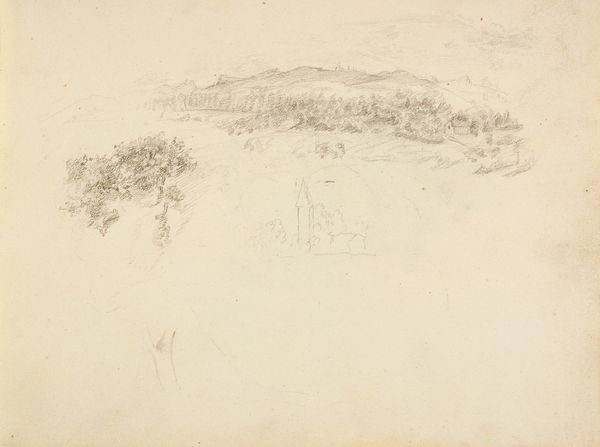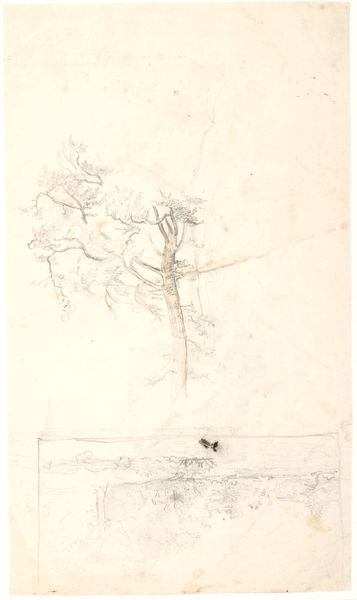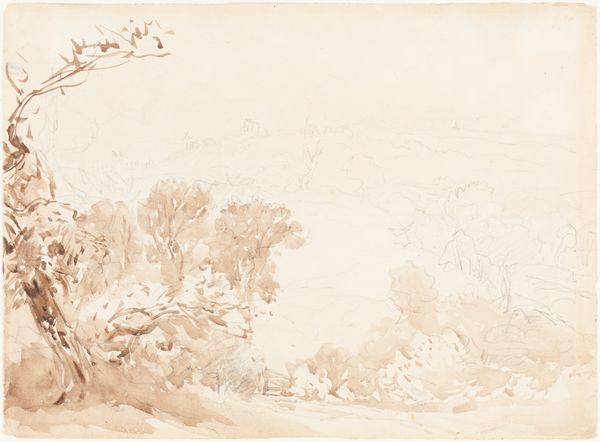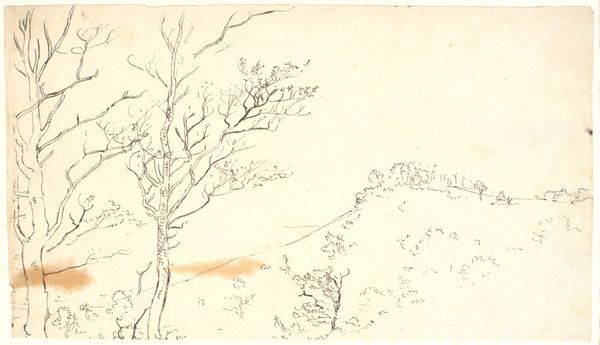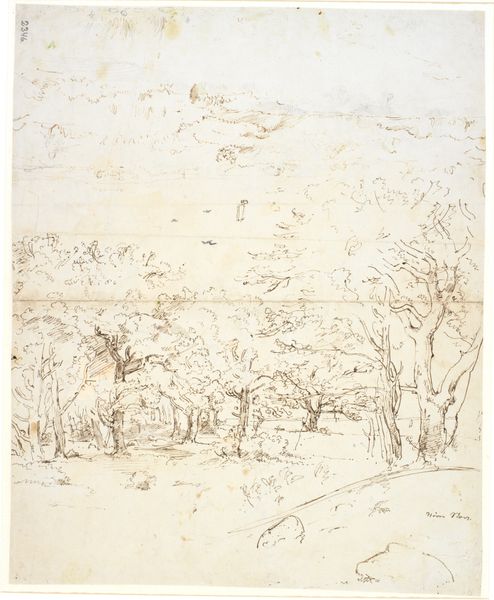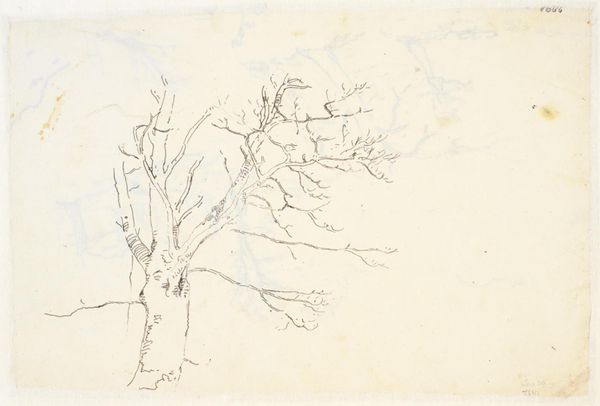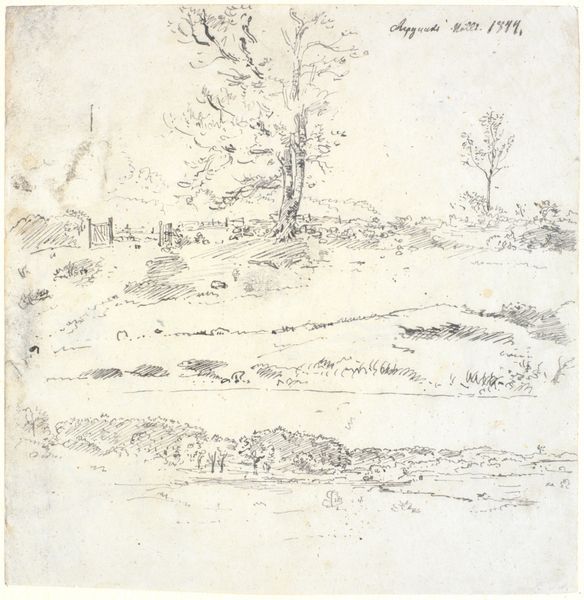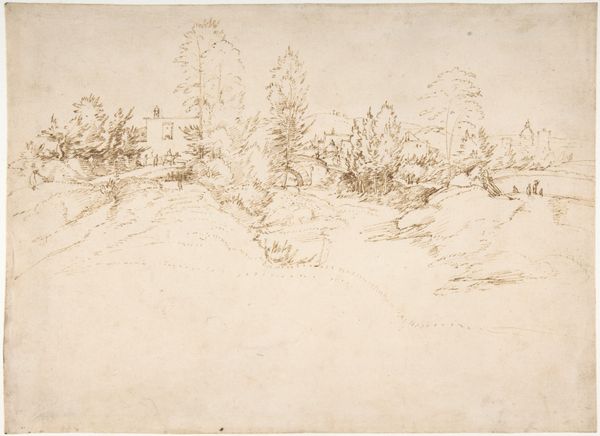
drawing, ink
#
drawing
#
ink painting
#
landscape
#
ink
#
romanticism
Dimensions: 210 mm (height) x 345 mm (width) (bladmaal)
Curator: At first glance, this drawing feels almost… tentative. Barely there. Editor: I can see that. We’re looking at "Jysk landskab. Søer mellem bakker" – "Jutland Landscape. Lakes between Hills"—an ink drawing done sometime between 1847 and 1849 by Dankvart Dreyer. It's currently housed here at the SMK. The rapid marks almost evoke the sensibility of some later landscape notations. But let’s consider, it’s also Romanticism! Curator: The thin, almost thread-like ink lines—were these readily available, standardized? Were different formulations of ink utilized based on geography or tradition at the time, or was this simply the effect Dreyer wanted? Editor: Interesting. The very production of Romantic ink drawings, especially landscapes, catered to an expanding art market. Works on paper could be more easily disseminated, and therefore reach a wider public. Landscape, which prior had always played a supportive role to larger compositional structure, became the protagonist in that period. The State Museum itself began acquiring art like this to present images and myths of "Danishness" to an emerging Danish citizenry. Curator: Which brings us to material availability. You highlight its political accessibility but, focusing on the process, what can that tell us about Dreyer's interaction with his landscape? Was it plein air, quickly recorded while battling wind, rain and time or was it recreated through recollection? Does his landscape romanticize rural labor in any way? What do we see, and not see, that alludes to an environmental perspective? Editor: Well, while Denmark prided itself on rural life and its attachment to the land, those who benefited the most were… well, rarely farmers or rural laborers. Instead, this art elevated wealthy merchants, large landowners, and, increasingly, a growing professional class, into the realm of cultivated sensibilities and appreciation of national character. So the landscape carries a latent cultural identity that at the time promoted a new sense of belonging among a new citizenry and a monarchy needing its people in times of nationalist expansion and industrial innovation. Curator: So, what you are suggesting then is the cultural landscape—or the romantic idealism in landscape—is as manufactured and symbolic as the materials that manifest that landscape within the artwork. Editor: Precisely! Curator: A great perspective and a solid observation. Editor: And thank you, the piece truly made me reflect on national representation and our current position towards historical myths.
Comments
No comments
Be the first to comment and join the conversation on the ultimate creative platform.
